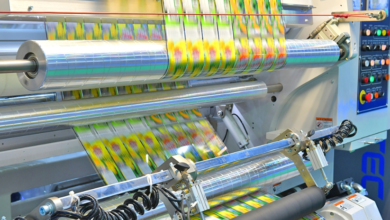The Hygienic Pipeline Pig: A Critical Tool for Clean and Efficient Processing Systems

In industries where product purity, cleanliness, and efficiency are essential—such as food and beverage, pharmaceuticals, dairy, cosmetics, and biotechnology—the equipment used must meet strict sanitary standards. Among the many tools that ensure such high levels of hygiene, one device stands out for its simplicity and effectiveness: the hygienic pipeline pig.
Though the term may sound peculiar to the uninitiated, a hygienic pipeline pig is a specialized component used in sanitary pipeline systems to recover product, reduce waste, and clean pipelines without dismantling the infrastructure. This article explores the significance of hygienic pigs, their role in process efficiency, and the different designs that suit various applications.
What Is a Hygienic Pipeline Pig?
A hygienic pipeline pig is a food-grade or pharmaceutical-grade tool designed to travel through a pipeline and perform product recovery, cleaning, or separation tasks. The pig moves inside the pipe, pushed by air, nitrogen, or product pressure, scraping the pipeline’s internal surface and displacing any remaining product or contaminants.
Unlike traditional industrial pigs used in oil and gas applications, hygienic pigs are engineered to comply with strict sanitary standards (FDA, EHEDG, 3-A) and are constructed using non-toxic, easy-to-clean materials such as silicone, EPDM, or PTFE.
Their use is particularly vital in hygienic processing plants where cross-contamination, product wastage, and cleaning inefficiencies can lead to significant economic losses and compliance issues.
See also: Building a Home Office: Essential Tech Tools for Remote Work
How Does a Hygienic Pipeline Pig Work?
The process of hygienic pigging starts with the insertion of the pig into the pipeline system via a launcher. Once inserted, the pig is propelled through the line using pressurized gas or liquid. As it moves, it pushes out the residual product left inside the pipeline—product that would otherwise be discarded or flushed during cleaning.
Here’s a typical sequence:
- Insertion: The pig is manually or automatically loaded into a launcher at the end of a product run.
- Propulsion: Air, nitrogen, or clean water pushes the pig through the pipe.
- Product Recovery: The pig scrapes or displaces product to a collection tank.
- Cleaning Preparation: After product recovery, the pipe is much cleaner and requires less water or chemicals to sanitize.
- Retrieval: The pig reaches the receiver station, where it is either cleaned and reused or stored for the next run.
The result? Less product loss, faster cleaning cycles, and superior hygiene.
Key Features of a Hygienic Pipeline Pig
The hygienic pipeline pig is distinct from conventional pigging tools due to several key features:
- Sanitary Design: Made from FDA-approved, food-safe materials with smooth surfaces to prevent microbial growth.
- Flexible Body: Can navigate through bends, reducers, and valves while maintaining a tight seal.
- Non-Abrasive: Does not damage the interior of stainless-steel pipelines.
- Easy Sterilization: Can be cleaned with CIP (clean-in-place) or sterilized with SIP (steam-in-place) processes.
- Traceability: Some include magnetic or RFID tracking for automated systems.
These features make them ideal for operations where hygiene is not just important—it’s legally required.
Industries That Rely on Hygienic Pipeline Pigs
The applications of hygienic pigging span a wide range of sanitary industries, including:
🧴 Cosmetics and Personal Care
Manufacturers of creams, lotions, and gels use hygienic pigs to recover thick or sticky product residues and avoid cross-contamination between different product batches.
🥛 Dairy and Beverage
From milk and yogurt to juices and carbonated beverages, hygienic pigs remove the leftover liquid product, reduce rinse times, and help maintain product purity.
💊 Pharmaceuticals
Strict GMP (Good Manufacturing Practices) require pipelines to be cleaned thoroughly between batches. Hygienic pigging is used to avoid contamination and reduce cleaning time.
🧪 Biotech and Chemical
In high-value or sensitive processes, pigs ensure full product recovery and protect the system from contamination or degradation.
Benefits of Using a Hygienic Pipeline Pig
Investing in a hygienic pipeline pig brings a host of benefits that go far beyond simple product recovery:
✅ Reduced Product Waste
Hygienic pigs recover up to 99.5% of residual product from the pipeline. That can translate to hundreds of liters or kilograms of saved material per production run.
✅ Lower Cleaning Costs
Since the pig removes most of the residue, the volume of water and chemicals needed for cleaning drops significantly—often by more than 50%.
✅ Minimized Downtime
Faster cleaning cycles mean shorter changeover times and higher production efficiency.
✅ Regulatory Compliance
Hygienic pigging systems help companies meet strict hygiene and safety regulations in the food, pharma, and cosmetic sectors.
✅ Sustainability
Less waste and reduced water and chemical use align with green manufacturing goals.
Types of Hygienic Pipeline Pigs
Not all hygienic pigs are the same. The selection depends on product viscosity, pipe configuration, and system pressure. Common types include:
- Solid Silicone Pigs: Flexible and easy to sterilize; good for many food applications.
- Double-Lip Pigs: Feature a dual sealing edge to ensure better recovery in viscous products.
- Hollow Pigs: Lighter and more flexible; can pass through narrow pipe curves.
- Magnetic or RFID Pigs: Used in automated systems to track pig movement.
Each pig type must be chosen based on the unique needs of the production system. Custom pig sizes and materials are also available.
Design Considerations and Best Practices
To get the most out of your hygienic pipeline pig, careful system design and maintenance are crucial. Here are a few best practices:
- Maintain Pig Integrity: Routinely inspect pigs for wear and replace them as needed to avoid contamination.
- Use Appropriate Propellant: Air, nitrogen, or water can be used depending on product and process requirements.
- Install Detection Sensors: Use magnetic or RFID sensors to track the pig’s progress in automated systems.
- Minimize Dead Legs: Pipeline designs should eliminate areas where the pig can’t reach or clean effectively.
- Sterilize Between Uses: Always clean and sterilize pigs before reinserting them to maintain hygiene standards.
The Future of Hygienic Pigging Systems
As production systems become smarter and more sustainable, pigging systems are evolving too. Upcoming innovations include:
- Automated Self-Cleaning Pigs: Designed to clean themselves between runs without removal.
- IoT Integration: Real-time pig tracking and performance monitoring via cloud-based systems.
- Advanced Materials: Development of pigs with enhanced chemical resistance and lower extractables.
These trends are shaping the future of hygienic pigging and further embedding the technology as a standard in processing industries.
Final Thoughts
The hygienic pipeline pig may be a small component in a vast processing system, but its impact is substantial. It combines product recovery, cost savings, regulatory compliance, and sustainability—all in one clean, efficient package. Whether you’re producing yogurt, shampoo, injectable medicine, or chocolate sauce, using a hygienic pig can improve every aspect of your pipeline operations.
As industries face growing pressure to reduce waste, improve margins, and maintain the highest hygiene standards, the hygienic pipeline pig is no longer a luxury—it’s a necessity.





